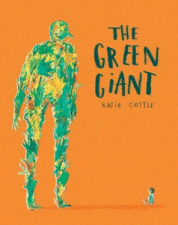
Sleep Tight, Platypup
Sleep Tight, Platypup
Renée Treml
Puffin Books, 2019
32pp., hbk., RRP $A19.99
9780143789697
Alone in his burrow, the baby platypus wakes up and is disturbed by the shadows and noises of the night. He calls out for his mummy who has been out searching for food, and after giving him a big hug she takes him outside to show him the night. At first all he can see is darkness but when she encourages him to look more closely, he sees other things that are familiar to him during the day and starts to understand. When the wind blows, she encourages him to listen carefully to the sounds and again, he starts to distinguish those that are familiar and his fear dissipates.
Superbly illustrated in her distinctive style, the creator of gems like Wombat Big, Puggle Small, Ten Little Owls, Once I heard a wombat, One Very Tired Wombat and Colour for Curlews has designed another gentle story for young readers which not only introduces them to another of Australia’s unique creatures but also helps dispel fears they might have about the night – perhaps even offering human parents a strategy that could help their little ones.
With its soft, gentle palette of purples portraying the night, rather than the more usual starkness of black, its sensitive text that reflects just how a mother would soothe a frightened child and its universal theme of a fear of the dark, this is a winner on so many levels.

A peek inside….
An activity pack with some lovely activities to enrich the book and help them understand their fears is available.









